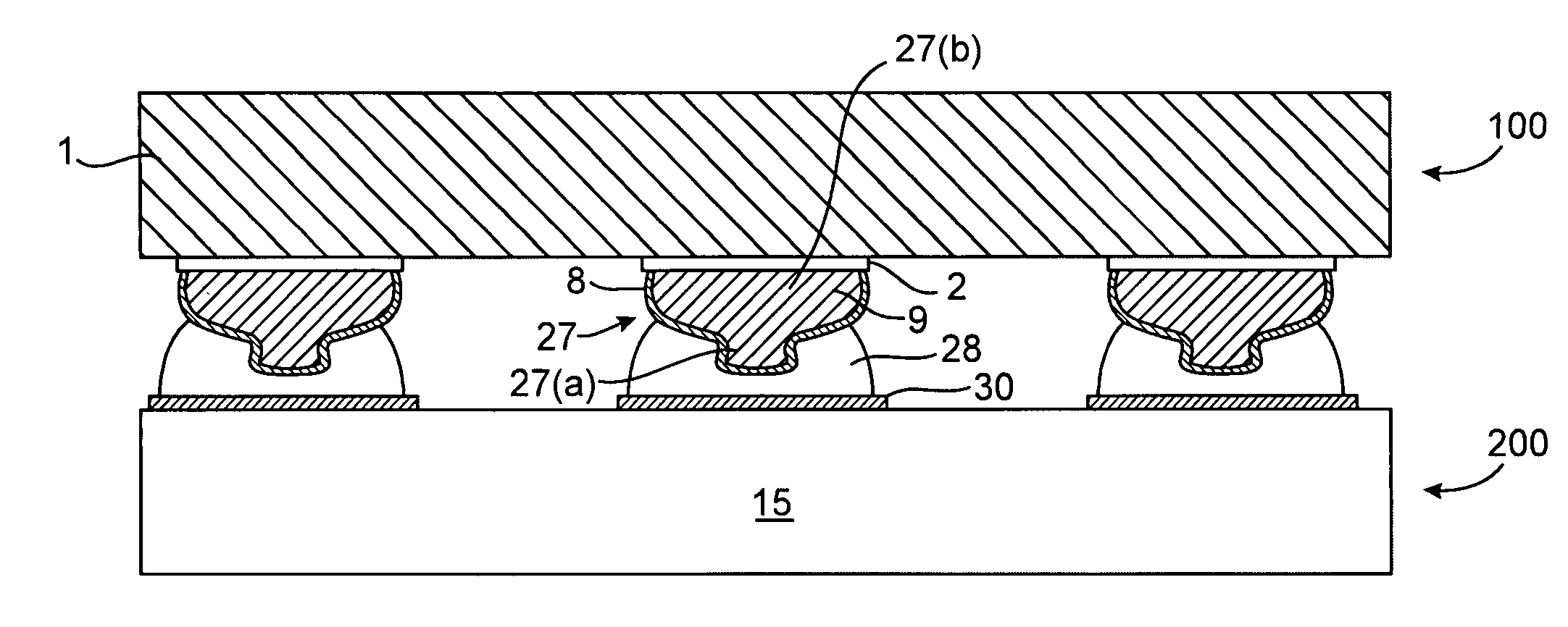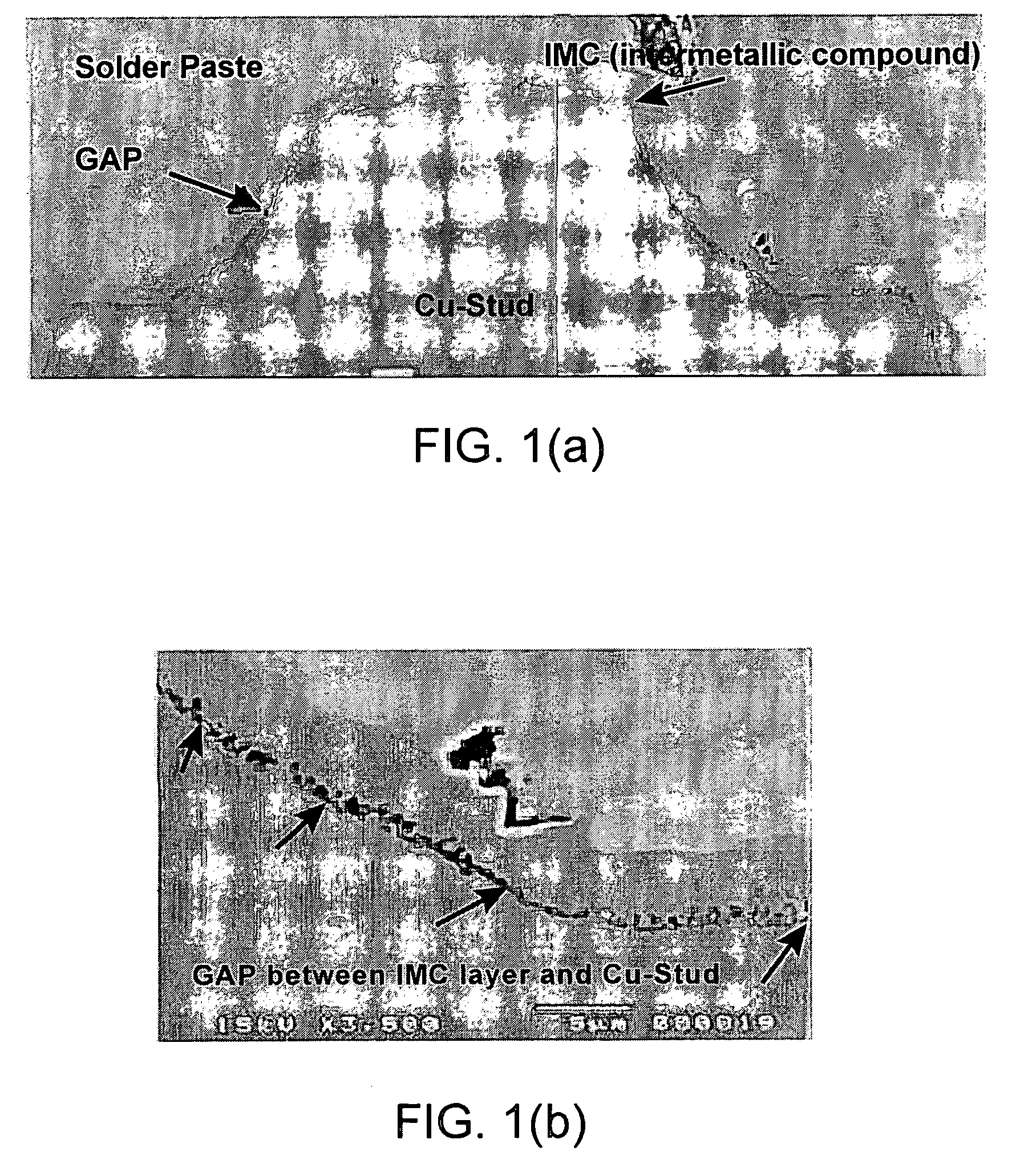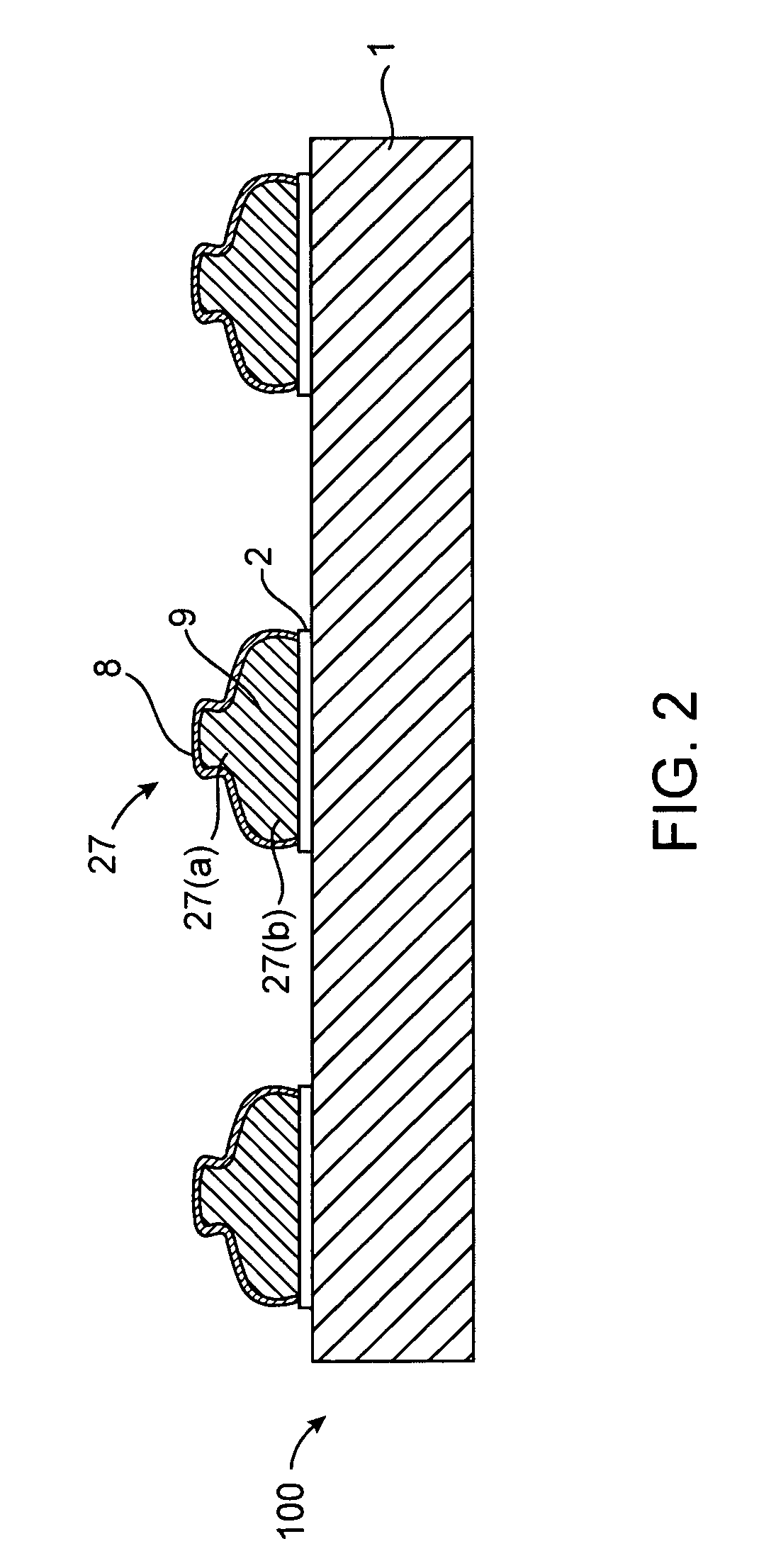Dual metal stud bumping for flip chip applications
a metal stud and flip chip technology, applied in the direction of soldering equipment, manufacturing tools, therapy, etc., can solve the problems of reducing the reliability of the formed package, deposited solder being exposed to high temperatures for extended periods of time, uneven height of the resulting solder ball on the semiconductor die,
- Summary
- Abstract
- Description
- Claims
- Application Information
AI Technical Summary
Benefits of technology
Problems solved by technology
Method used
Image
Examples
Embodiment Construction
[0019]FIG. 2 shows a stud bumped semiconductor die 100 according to an embodiment of the invention. The stud bumped semiconductor die 100 has a semiconductor die 1 including first conductive regions 2, and conductive stud bumps 27 on the first conductive regions 2.
[0020]The semiconductor die 100 may comprise any suitable material (e.g., silicon, gallium arsenide) and may include any suitable active or passive semiconductor device. For example, the semiconductor die may comprise a metal oxide field effect transistor (MOSFET) such as a power MOSFET. The MOSFET may have a planar or trenched gate. Trenched gates are preferred. Transistor cells containing trenched gates are narrower than planar gates. In addition, the MOSFET may be a vertical MOSFET. In a vertical MOSFET, the source region and the drain region are at opposite sides of the semiconductor die so that current in the transistor flows vertically through the semiconductor die.
[0021]Each conductive region 2 may be, for example, ...
PUM
| Property | Measurement | Unit |
|---|---|---|
| thickness | aaaaa | aaaaa |
| diameter | aaaaa | aaaaa |
| oxidation resistant | aaaaa | aaaaa |
Abstract
Description
Claims
Application Information
 Login to View More
Login to View More - R&D
- Intellectual Property
- Life Sciences
- Materials
- Tech Scout
- Unparalleled Data Quality
- Higher Quality Content
- 60% Fewer Hallucinations
Browse by: Latest US Patents, China's latest patents, Technical Efficacy Thesaurus, Application Domain, Technology Topic, Popular Technical Reports.
© 2025 PatSnap. All rights reserved.Legal|Privacy policy|Modern Slavery Act Transparency Statement|Sitemap|About US| Contact US: help@patsnap.com



